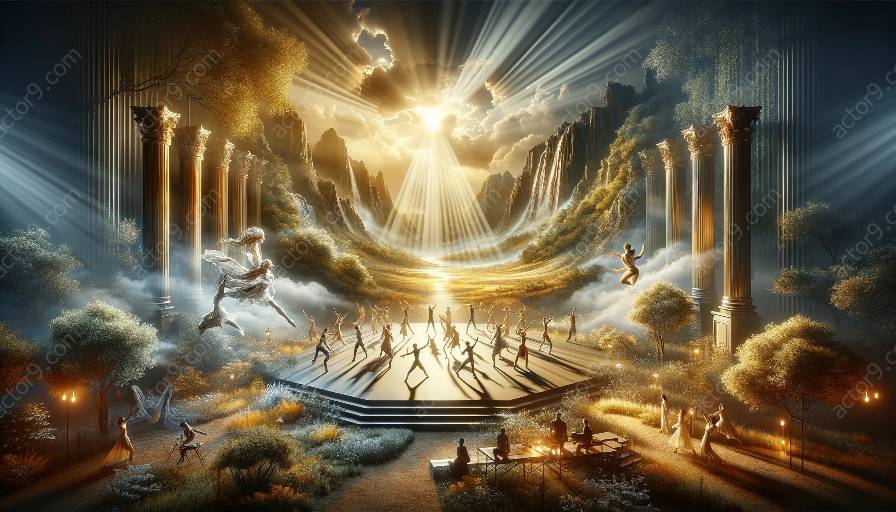Physical theatre is an expressive art form that combines movement, gesture, and vocalization to convey a story or emotion through the body. The use of theatrical lighting in physical theatre plays a vital role in creating atmosphere and space, enhancing the visual and emotional impact of the performance.
The Role of Lighting in Physical Theatre
In physical theatre, lighting serves as a powerful tool to manipulate and define the space. It can transform the stage into various environments, evoke different moods, and emphasize the performers' movements and expressions. The carefully crafted use of lighting helps the audience to focus on specific elements within the performance, guiding their attention and enhancing the overall impact of the production.
Creating Atmosphere through Theatrical Lighting
Lighting design in physical theatre contributes significantly to establishing the mood and atmosphere of a performance. By using different colors, intensities, and angles of light, lighting designers can evoke a range of emotions and create a sense of depth within the space. Whether it's a tense, dramatic moment or a joyful, uplifting scene, the lighting design plays a crucial role in immersing the audience in the world of the performance.
Enhancing Space and Movement
The careful manipulation of light can create illusions of depth, height, and distance, altering the audience's perception of the performance space. By sculpting the space with light, designers can highlight the physicality and movements of the performers, adding dynamism and visual interest to the production. This use of lighting is essential in physical theatre, where movement and spatial awareness are integral to the storytelling.
Lighting Techniques in Physical Theatre
Various lighting techniques are employed to achieve different effects in physical theatre. This may include silhouette lighting to create striking visual images of the performers, warm or cool washes to set the emotional tone of a scene, and dynamic lighting changes to punctuate the rhythm and pacing of the performance. These techniques not only support the narrative but also elevate the physicality and expression of the performers.
Choreography of Light and Shadow
Light and shadow play a critical role in physical theatre, contributing to the choreography of the performance. The interplay of light and shadow can accentuate the performers' movements, create dramatic tension, and sculpt the physical space. Lighting designers work in tandem with the choreographers and performers to choreograph the interplay of light and shadow, adding another layer of storytelling and dimension to the performance.
Conclusion
In conclusion, the role of lighting in physical theatre cannot be understated. The thoughtful and innovative use of theatrical lighting contributes to creating atmosphere and space, enhancing the visual and emotional impact of physical theatre performances. From setting the mood and evoking emotions to shaping the movements and spatial dynamics, lighting design is an indispensable element that brings physical theatre to life.




































